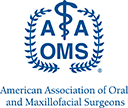Sleep apnea is a serious condition that causes a person to stop breathing during sleep. In some cases, you may stop breathing hundreds of times in one sleep cycle. If you think you may have sleep apnea, contact our office for a consultation.
Sleep apnea may be caused by genetics, poor posture, allergies, enlarged tonsils, and other issues. Obstructive sleep apnea is the most common form of sleep apnea. This is caused by airways in the throat and mouth collapsing during sleep. If you have obstructive sleep apnea you or your partner may notice:
- Extended pauses in breathing during sleep
- Loud snoring
- Restless sleep
- Serious daytime sleepiness
- Irritability or personality change
- Poor memory or concentration
- Headaches
- Weight gain
- Depression
If left untreated, sleep apnea increases risks of:
- Cancer
- Cardiovascular disease
- Diabetes
- Hypertension
- Stroke
- Obesity
- Other serious health complications
People with obstructive sleep apnea (OSA) have disrupted sleep and low blood oxygen levels. When obstructive sleep apnea occurs, the tongue is sucked against the back of the throat. This blocks the upper airway and airflow stops. When the oxygen level in the brain becomes low enough, the sleeper partially awakens, the obstruction in the throat clears, and the flow of air starts again, usually with a loud gasp.
Repeated cycles of decreased oxygenation from sleep apnea lead to very serious cardiovascular problems. Additionally, these individuals suffer from excessive daytime sleepiness, depression, and loss of concentration.
Some patients have obstructions that are less severe called Upper Airway Resistance Syndrome (UARS). In either case, the individuals suffer many of the same symptoms.
The first step in treatment resides in recognition of the symptoms and seeking appropriate consultation. Oral and maxillofacial surgeons offer consultation and treatment options.
In addition to a detailed history, the doctors will assess the anatomic relationships in the maxillofacial region. With cephalometic (skull x-ray) analysis, the doctors can ascertain the level of obstruction. Sometimes a naso-pharyngeal exam is done with a flexible fiber-optic camera. To confirm the amount of cardiovascular compromise and decreased oxygenation levels, a sleep study may be recommended to monitor an individual overnight.
There are several treatment options available. An initial treatment may consist of using a nasal CPAP machine that delivers pressurized oxygen through a nasal mask to limit obstruction at night. One of the surgical options is an uvulo-palato-pharyngo-plasty (UPPP), which is performed in the back of the soft palate and throat. A similar procedure is sometimes done with the assistance of a laser and is called a laser assisted uvulo-palato-plasty (LAUPP). In other cases, a radio-frequency probe is utilized to tighten the soft palate. These procedures usually performed under light IV sedation in the office.
In more complex cases, the bones of the upper and lower jaw may be repositioned to increase the size of the airway (orthognathic surgery). This procedure is done in the hospital under general anesthesia and requires a one to two day overnight stay in the hospital.
OSA is a very serious condition that needs careful attention and treatment. Most major medical plans offer coverage for diagnosis and treatment. If you have been diagnosed with sleep apnea, contact our team for a consultation. We can provide you with effective treatment options to improve your sleep and your health.






